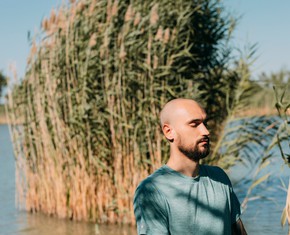The views expressed in our content reflect individual perspectives and do not represent the authoritative views of the Baha'i Faith.
As odd as this may sound, I love movies about prisoners of war — POWs. Why? Because I am always inspired by stories that show people rising above unfathomably horrid circumstances.
These kinds of films depict POWs who somehow managed to maintain dignity, establish bonds of friendship, and create something that felt like home.
I recently watched a film that vividly showed the extent to which some POWs strive to create beauty in their barracks — surely the need to be surrounded by beauty is a fundamental human trait. Ever since watching that film, I’ve been thinking more about beauty as a universal concept.
RELATED: Beauty Enhances and Enriches the Spirit
We notice beauty in nature, such as a waterfall or a sunset. We create it from natural materials, perhaps as a floral arrangement or a well-planned garden. We design and build it, whether it results in major architecture or a backyard shed. We express it through our own talents, such as in music or cooking.
Beauty can also be recognized within true human progress. As the Baha’i teachings indicate: “… when divers shades of thought, temperament and character are brought together, the beauty and glory of human perfection will be revealed and made manifest.”
Accordingly, Baha’is are encouraged to promote beauty, whether natural or man-made, as a guiding principle in community planning. We also want to surround ourselves with beauty in our homes and daily lives. In fact, the concept of beauty is prominent within the Baha’i teachings. As just one indication of this, Baha’u’llah is often referred to as “The Blessed Beauty.” So, what does beauty here in this world do for us other than delight our senses? In a profound way, as Abdu’l-Baha said in a speech he gave in Paris, it can touch the heart and inspire us to noble sentiments and actions:
The garden which is pleasing to the eye and which makes the heart glad, is the garden in which are growing side by side flowers of every hue, form and perfume, and the joyous contrast of color is what makes for charm and beauty … each flower, each tree, each fruit, beside being beautiful in itself, brings out by contrast the qualities of the others, and shows to advantage the special loveliness of each and all.
Thus should it be among the children of men! The diversity in the human family should be the cause of love and harmony, as it is in music where many different notes blend together in the making of a perfect chord.
There is beauty in creativity and innovation. For example, I have seen videos by the Vienna Vegetable Orchestra. The members of this group create their own musical instruments daily from fresh fruits and vegetables. I find the idea itself so innovative and charming that, regardless of anyone’s personal taste in music, truly the orchestra members have created a quirky kind of beauty.
RELATED: How the Beauty of This World Helps Us Understand the Next
We can find the highest beauty in human concord and peace. When we put pointless, wasteful prejudices aside, we discover that we are one in service to humanity. Much like birds that differ in outward form or color, we can learn to live together in peace and to love each other. Requisite to this is recognizing the beauty in all people by shifting our gaze from external beauty to beauty within, so we begin to value above all a person’s substance, character, and personality.
Subtler forms of beauty can be a friendly smile or a kindly deed. Every one of us can surround ourselves with, and extend to others, these simple, deeply satisfying instances of beauty. If POWs can create beauty in their surroundings, how much more can the rest of us do?
















Comments
Sign in or create an account
Continue with Googleor